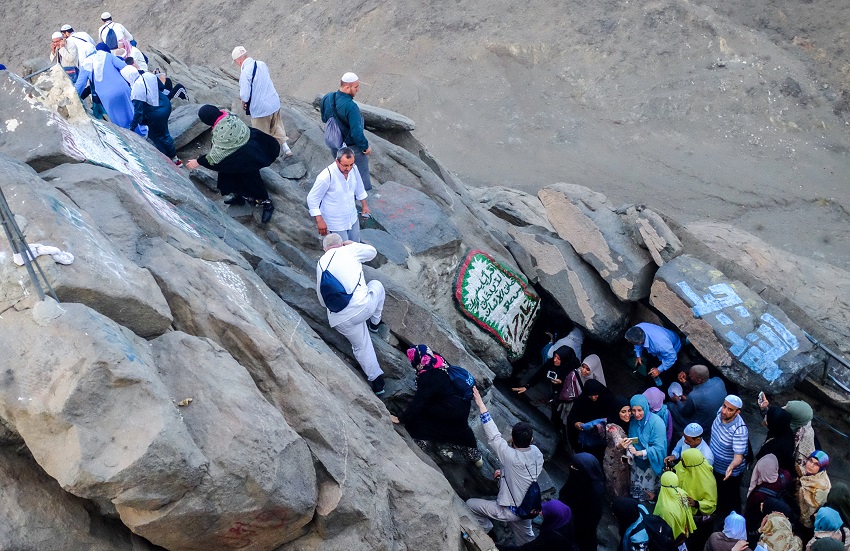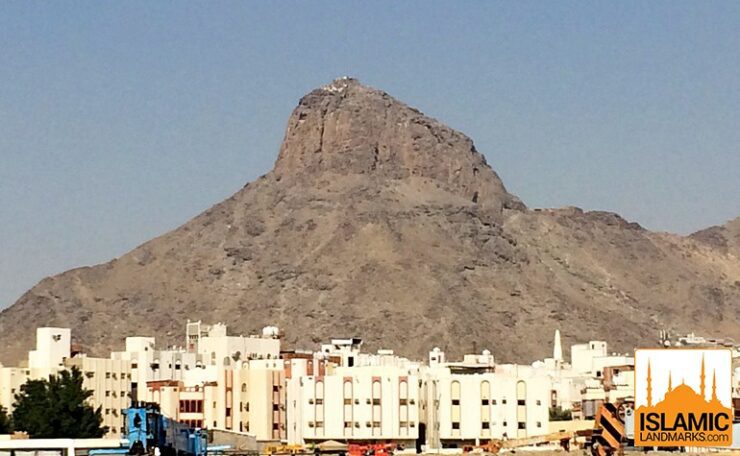Jabal al-Nour
Mecca, Saudi Arabia

Visit Jabal al-Nour in Mecca, Saudi Arabia, to experience one of the most revered historical sites in Saudi Arabia. Famous for the Cave of Hira, where the Prophet Muhammad received the first revelation of the Quran, Jabal al-Nour is a top attraction for Islamic history enthusiasts and spiritual travelers. Add this site to your list of things to see in Mecca and embark on a meaningful hike with panoramic views and rich cultural significance.
Rising dramatically from the rocky landscape just outside Mecca, Jabal al-Nour—meaning "Mountain of Light"—is one of the most significant historical sites in Saudi Arabia and a must-visit destination for those looking to explore the spiritual roots of Islam. Located about 5 kilometers northeast of the Holy Kaaba, this mountain holds deep religious and historical value, making it a popular site for pilgrims, history enthusiasts, and hikers alike. A Mountain Steeped in Prophetic History Jabal al-Nour became world-renowned not for its size, but for what it contains: the Cave of Hira. It was within this small, humble cave that the Prophet Muhammad (peace be upon him) is believed to have received his first revelation from the Angel Jibreel (Gabriel), marking the beginning of the Islamic faith. This profound event is said to have taken place around the year 610 CE and is recorded as the moment when divine guidance first descended upon the Prophet. For Muslims worldwide, this spot holds extraordinary spiritual resonance. What to See When You Visit Jabal al-Nour Climbing Jabal al-Nour is both a physical and spiritual journey. The mountain stands at approximately 640 meters (2,100 feet), and reaching the Cave of Hira requires a steep hike of over 1,200 steps. Along the way, visitors are treated to panoramic views of Mecca’s surrounding valleys and hills, especially striking during sunrise and sunset. The Cave of Hira itself is modest in size, enough for only a few people at a time, but its atmosphere is serene and deeply moving. Many pilgrims pause here for reflection and prayer. Though the cave appears simple, its legacy is monumental, making it one of the top attractions in Mecca for those interested in Islamic heritage. Unique Facts and Sacred Mystique What makes Jabal al-Nour tourism so compelling is the powerful combination of nature, history, and faith. Few visitors realize that the name "Mountain of Light" is not just symbolic—it’s said that a mysterious light sometimes glows from the cave, according to local legend. Some also believe the mountain's silhouette resembles a person in prostration (sujood), symbolizing devotion. Another fascinating aspect is that despite its religious importance, the mountain and cave were not developed into formal tourist attractions by historical standards. This keeps the site more authentic and spiritually grounded, offering a raw, untouched experience for modern-day visitors. Planning Your Visit: Practical Tips and Information Today, Jabal al-Nour remains open to the public year-round and is particularly popular during the Hajj and Umrah seasons. There is no entrance fee, but visitors should be prepared for a strenuous climb, especially in the summer heat. Early morning or late evening visits are recommended to avoid the midday sun. There are no facilities or shops on the mountain, so bringing water, comfortable walking shoes, and a flashlight (if climbing pre-dawn or post-sunset) is essential. Modest attire and respectful behavior are also expected, given the site's sacred status. While not an "official" part of the Hajj rituals, many pilgrims include a visit to Jabal al-Nour in their itinerary to deepen their understanding of Islam’s early days and to feel spiritually closer to the Prophet's experience.
Location
Coordinates: 39.8579, 21.4563
View on Google Maps

